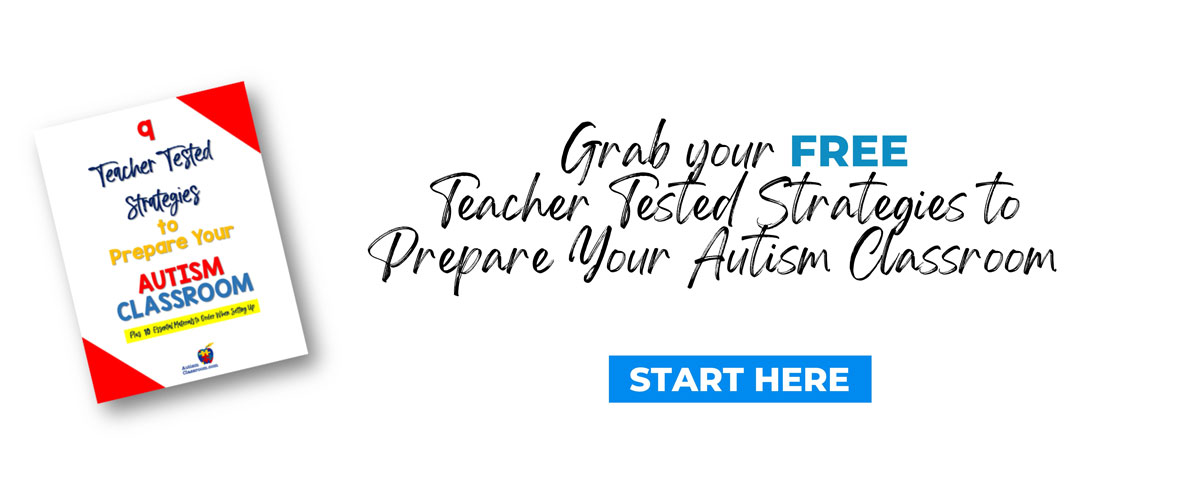Inside: What Does Morning Circle Look Like in an Autism Classroom? How Long Does It Need To Be? How Do I Get Them There? What Materials Should I Use? What are They Learning?
Deciding to skip your usual cup of coffee or tea or missing your morning workout can have a huge impact on the way you feel and your overall productivity for the day. I know for me, it’s the iced tea that makes me feel like I can take on the day. Some days, it sets the stage for the way that the rest of the day will look. For students, this same logic applies.
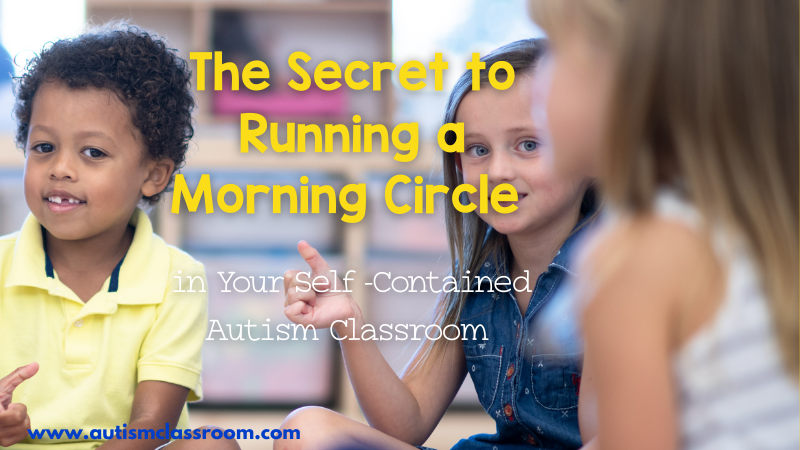
You are directly responsible for setting the stage to them, and this can only be achieved through intentional planning of the routine and procedures. Drag those curtains, put up that podium and set that stage with morning circle. It is a structured time of the day (morning) where the entire class can participate in whole group activities such as calendar review, predicting the weather, rote counting, and reading.
What makes a successful morning circle, especially for students with autism, is ensuring that it is structured, predictable and informative. Add in opportunities to for students communicate, express how they are feeling, and maybe have them engage with song and dance and you are becoming a complete and total director on that stage. The morning circle can deliver a sense of structure to all students and should be included in every autism support classroom.
How Long Does It Need To Be?
Well, this is the golden question when it comes to morning circle. Each school is going to have it’s own take on this. But a good amount of time is 20 minutes or less. When you first start, it may take longer since students will need to learn the routine. During this beginning stage you should expect challenges with keeping student’s attention, keeping students in the area, and keeping students in their chairs. So if you put it on your calendar, you might allot 30 minutes, knowing that the first 5 minutes and last 5 minutes will be for transition to and from the activity.
How Do I Get Them There?
Listen, you have not really negotiated until you negotiate with a 6 year-old child with autism who is not interested in coming to your circle time. Don’t get offended – they’re just not that into your circle time. It happens. Don’t take it personal, just step back and think. What do we know about autism that can help here?
- For some people, crowds are difficult
- Sensory differences are real and can cause a number of challenges in a classroom
- I do what I want, not what you want
- The music is too loud, the clapping is too loud and this adult is too loud
- All of my favorite things are over there, so…
If you are competing with all of that, you better have some tricks up your sleeve. Think about having something that makes them want to attend. For some students, it might just be a seat sensory cushion in the chair, for others it may be the chance to hold a string in their hand while sitting there. And yet, for others, a visual support like a First-Then board may do the trick.
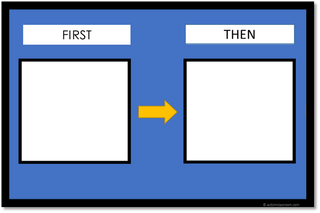
I always used a transition bin with small toys I knew they would like. Because it was in the area I needed my students to go to, it was a natural way to get them interested in going over there.
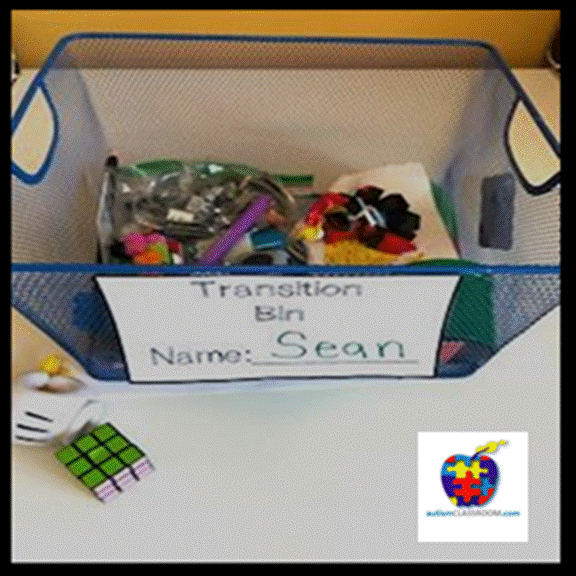
What Does Morning Circle Look Like?
For some classrooms, it is at the table, for others, it is at the desk. I always tended to place chairs in a semi-circle and interact in that manner. It really depends on your classroom and your intention. For example, if you are using interactive binders during circle time, it is possible that students will need a table or desk to place them on. So you will need to visualize how you want it to go in your classroom.
Every great morning circle includes a visual schedule of activities that students are expected to engage during that time period. Each classroom teacher has different expectations for what this means. You are going to need to make it your own production! Whatever you choose, students should know the morning circle schedule as a consistent time each morning where they are expected to do the same routine. You will add creativity, but the organization and routine will continue to be the same. For example, your morning meeting schedule might look something like this:
- Check In - See Who is Here Today
- Review the Day, Month and Date
- Today’s Daily Class Schedule
- Guess The Weather
- Other Areas You Want to Cover Such as Feelings/Colors/Songs Etc.
- Where Do We Go Next?
I used a visual support like this way back when to help me organize what I called "opening circle time."
You can create one by adding blank squares to a page, laminating it and using vecro to place the picture cards on top. Just create picture cards that go with each section of your morning circle. This way you can show students the mini-subset sections of the larger morning circle routine. Just be sure to say something to the effect of "check-in is done, now it is time to review the day of the week."
What Materials Should I Use?
Like any great lesson, the types of materials you use can determine a student’s outcome and how well they can access the content. First, you're in luck because we have some songs for morning meeting here on our Youtube page. 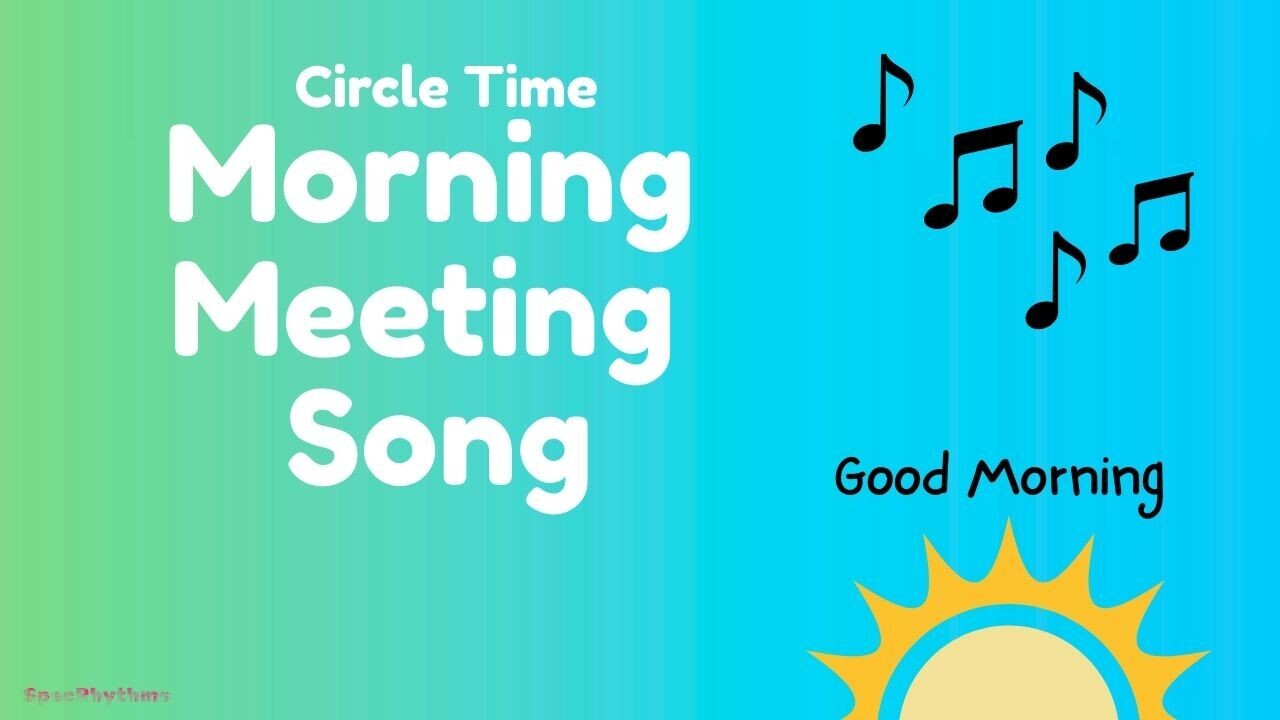
As fast-moving and quick as this morning time is, the physical materials used should be easy to access, easy to manipulate and easy to put away when done.
Materials like morning meeting books, laminated papers, handouts, and pointers can add to a student’s engagement. If materials are used, they should be visually appealing using fonts and images that students can easily see and that are easy to read. As long as students can be hands-on and engage with you throughout this time you have already set them up to make the most of their morning circle. See more about making the most of the morning meeting here.
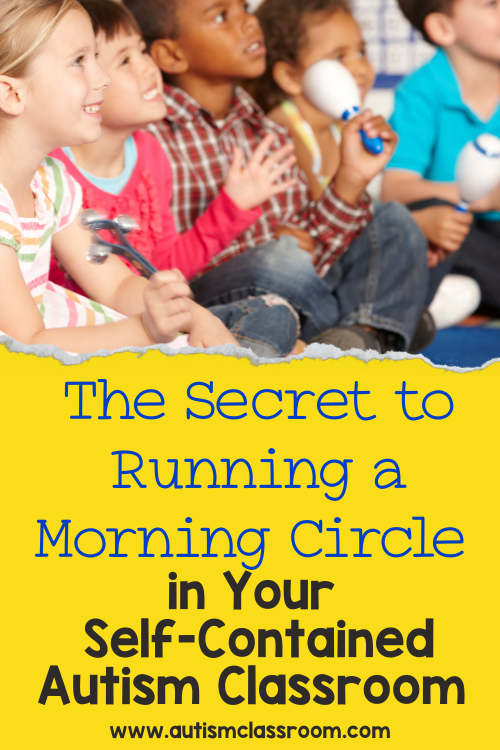
What are they Learning?
As students become more adept at telling how they feel, what the weather is like, the day of the week, and other important daily facts, they are building receptive and expressive communication skills. Morning circles also present opportunities for students to learn how to follow directions and build independent skills. Students who have difficulty communicating verbally can be helped by visual aids. With intentional preparation, you can help students step off that morning circle stage knowing exactly what to expect from their school day.


